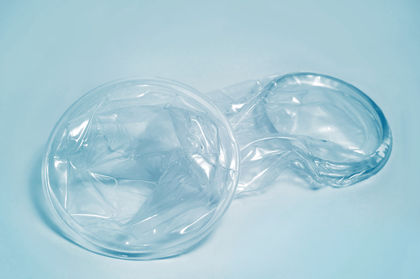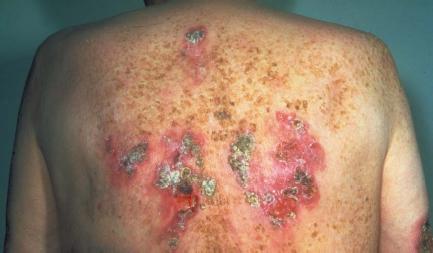Sexually transmitted diseases

Long known as venereal disease, after Venus, the Roman goddess of love, sexually transmitted diseases (STDs) are among the most common infectious diseases in the world. (An infectious disease is one caused by a parasite that attacks a host and begins to multiply, interfering with the normal life functions of the host.) There are more than 20 known STDs, ranging from life-threatening to painful and unsightly.
While acquired immunodeficiency syndrome (AIDS) is the most widely publicized STD, others are more common. Chlamydia, gonorrhea, and genital warts are nearing epidemic rates in the United States. Other common STDs include genital herpes, trichomoniasis, and chancroid (pronounced KAN-kroyd). STDs are most prevalent among teenagers and young adults under the age of 25 and affect individuals of all backgrounds and socioeconomic levels. Some STDs are caused by bacteria and usually can be treated and cured. Others are caused by viruses and can typically be treated but not cured. Untreated STDs pose an enormous public health problem.
Bacterial STDs
STDs caused by bacteria include syphilis, gonorrhea, chlamydia, and chancroid. Syphilis is usually spread through sexual contact and begins with painless lesions (sores) called chancres (pronounced KAN-kerz) that may appear inside or outside the body. The disease occurs in four stages and eventually affects the entire body. It is curable with the antibiotic penicillin but if left untreated can result in blindness, insanity, or death.
Words to Know
Antibiotic: Drugs used to fight infections.
Bacteria: Single-celled microorganisms that live in soil, water, plants, and animals, and some of which are agents of disease.
Cervix: In females, the opening where the vagina meets the uterus.
Chancre: A sore that occurs in the first stage of syphilis at the place where the infection entered the body.
Epidemic: A rapidly spreading outbreak of a contagious disease.
Genitals: Organs of the reproductive system.
Infectious disease: A condition that results when a parasitic organism attacks a host and begins to multiply, interfering with the normal life functions of the host.
Urethra: The canal that carries urine from the bladder and serves as a genital duct.
Uterus: A pear-shaped, hollow muscular organ in which a fetus develops during pregnancy.
Vagina: In females, the muscular tube extending from the uterus to the outside of the body.
Virus: An infectious agent that can only reproduce in the cells of a living host.
Vulva: The external parts of the female genital organs.
Gonorrhea is a common infectious disease that often has no initial symptoms. It affects the urinary tract and reproductive organs in males and females and, if left untreated, can cause sterility and blindness. Chlamydia infection is the most common sexually transmitted disease in the United States. Symptoms of chlamydia are similar to those of gonorrhea, and the disease can result in sterility in both males and females if left untreated. Chancroid is a bacterial disease that is more common in males and is characterized by painful ulcers and inflamed lymph nodes in the groin. Syphilis, gonorrhea, chlamydia, and chancroid can all be successfully treated with antibiotics.
Viral STDs
Viral STDs include AIDS, genital herpes, and genital warts. AIDS is caused by the human immunodeficiency virus (HIV), which attacks the immune system, making the body susceptible to infections and rare

cancers. HIV is transmitted through the exchange of bodily fluids, such as semen, vaginal fluids, or blood. AIDS is a fatal disease in which a person usually dies from an infection that the body's damaged immune system cannot fight off.
Genital herpes is a widespread, recurrent viral infection caused by one of two types of herpes simplex virus. Herpes simplex virus type 1 most frequently causes cold sores of the lips or mouth. Herpes simplex virus type 2 causes painful blisters in the genital area (reproductive organs). After an initial painful infection that lasts about three weeks, recurring outbreaks of about ten days' duration may occur a few times a year.
Genital warts are caused by the human papillomavirus, of which there are more than 60 strains. After becoming infected with the virus through sexual contact, genital warts usually develop within two months. They may appear on the vulva, cervix, or vaginal wall of females and in the urethra or foreskin of the penis in males. The warts can be removed in various ways, but the virus remains in the body. Genital warts are associated with cancer of the cervix in females.
STDs caused by viruses cannot be cured. Currently, experimental AIDS and herpes vaccines are being tested with the hope that they will provide immunity against these diseases.

Other STDs
Other STDs include trichomoniasis, an infection caused by a parasitic protozoan that produces inflammation of the vagina and a badsmelling, foamy discharge in females. It can also infect the urinary tract of both males and females. Treatment consists of administration of a drug that kills the protozoa.
Prevention
The only sure way to prevent contracting an STD is through sexual abstinence. Other methods that can aid in prevention and spread of STDs include the use of condoms, knowledge of the physical signs and symptoms of disease, and having regular check-ups.
[ See also AIDS (acquired immunodeficiency syndrome) ; Bacteria ; Virus ]